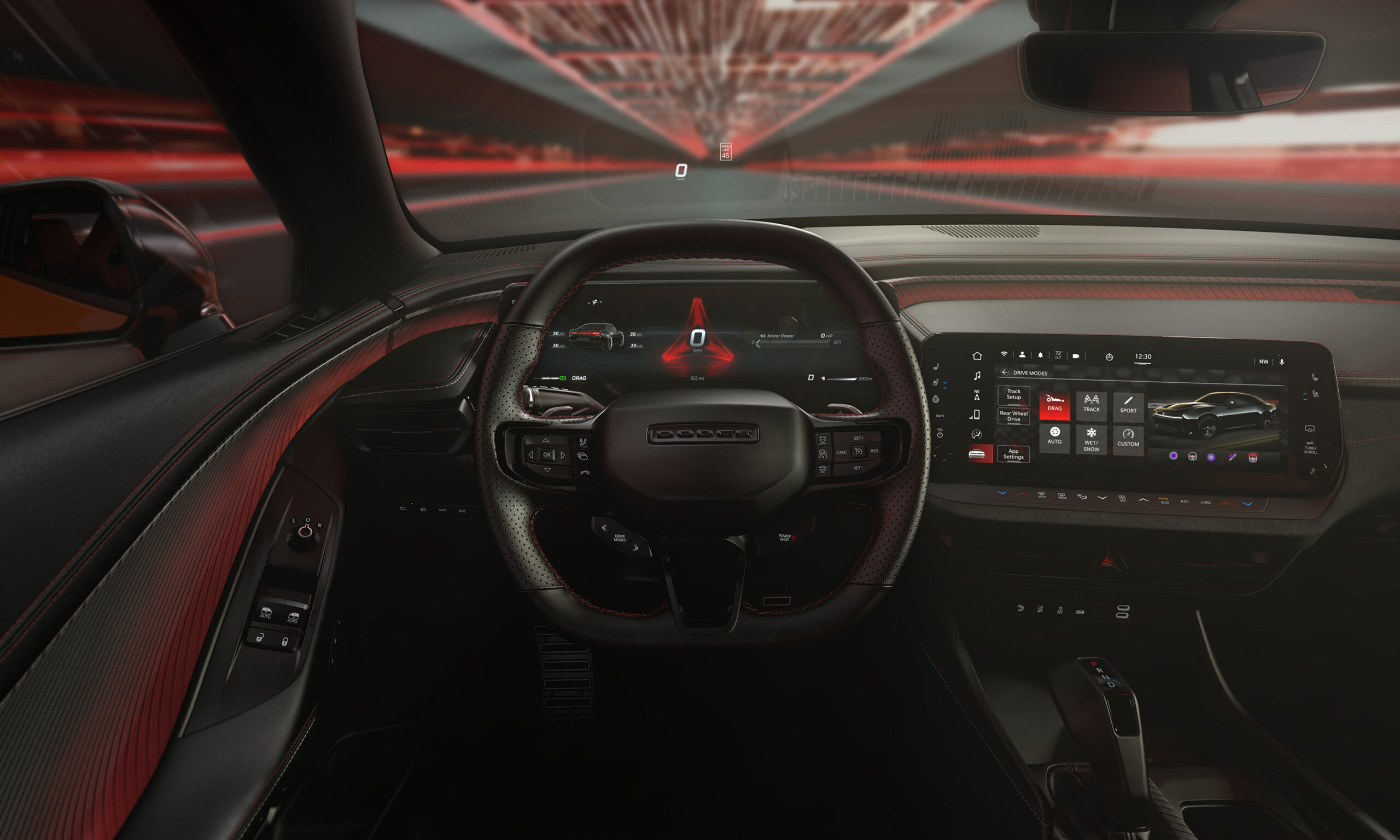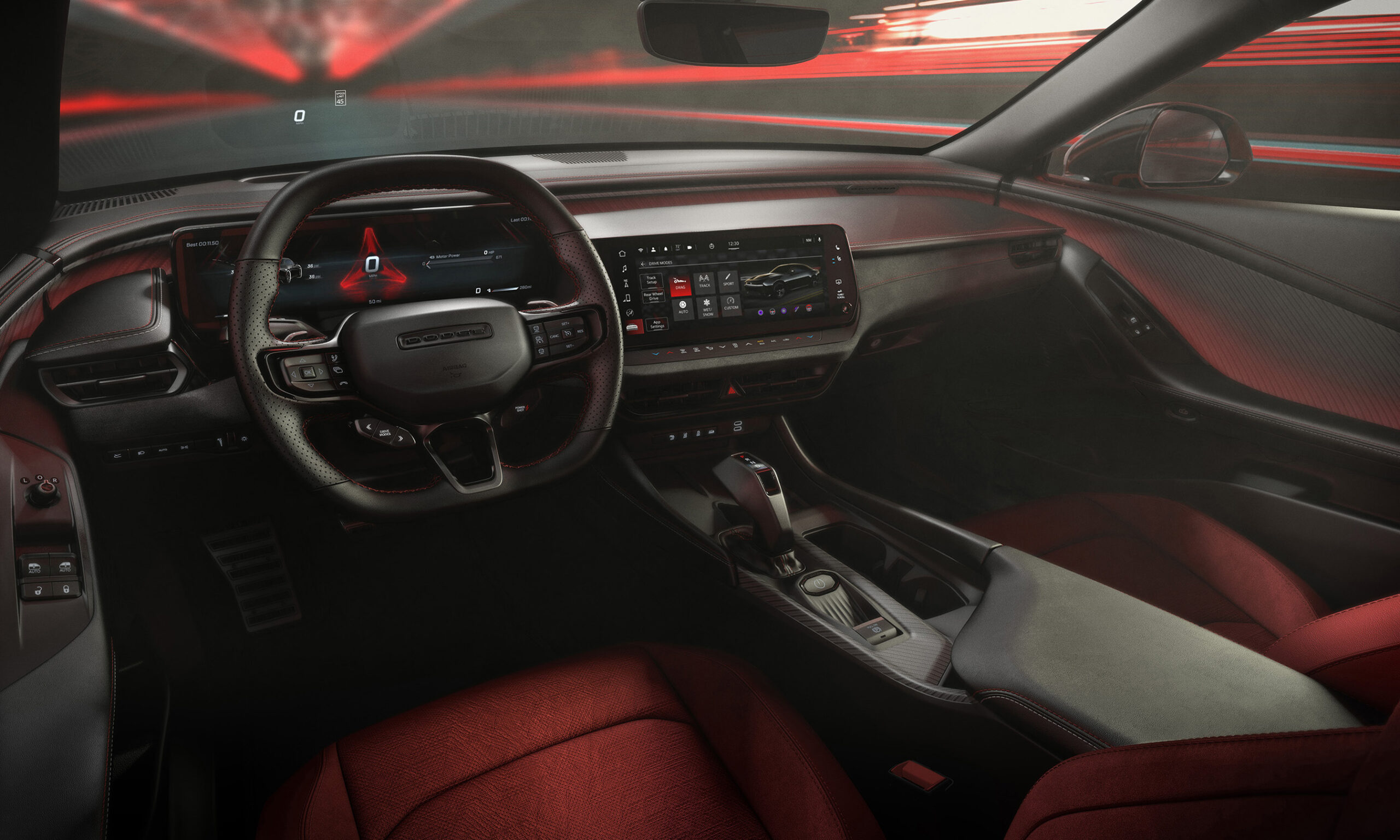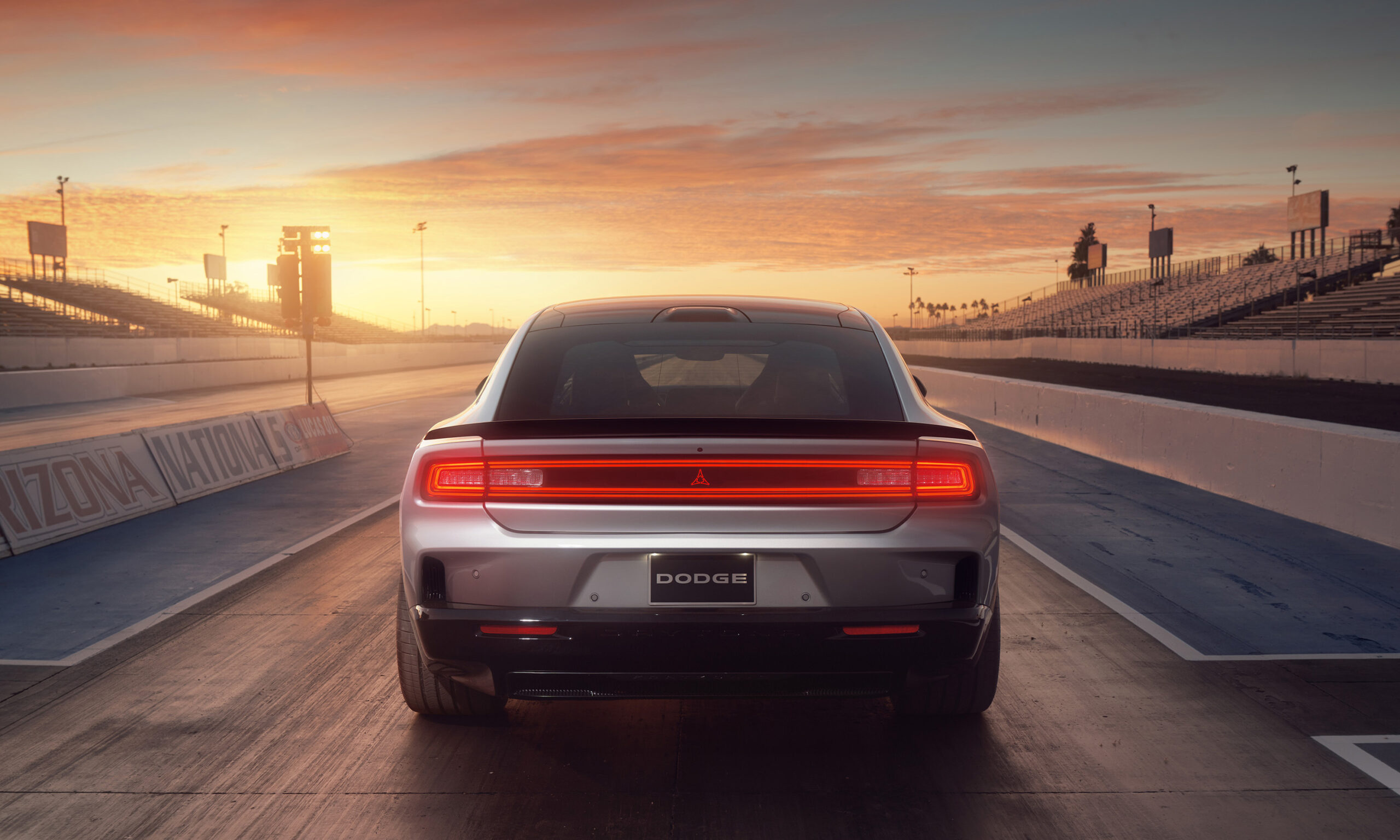- EVs will be the real muscle in next-generation Charger family
- Electronic noisemaker will be standard
- In dealerships by fall
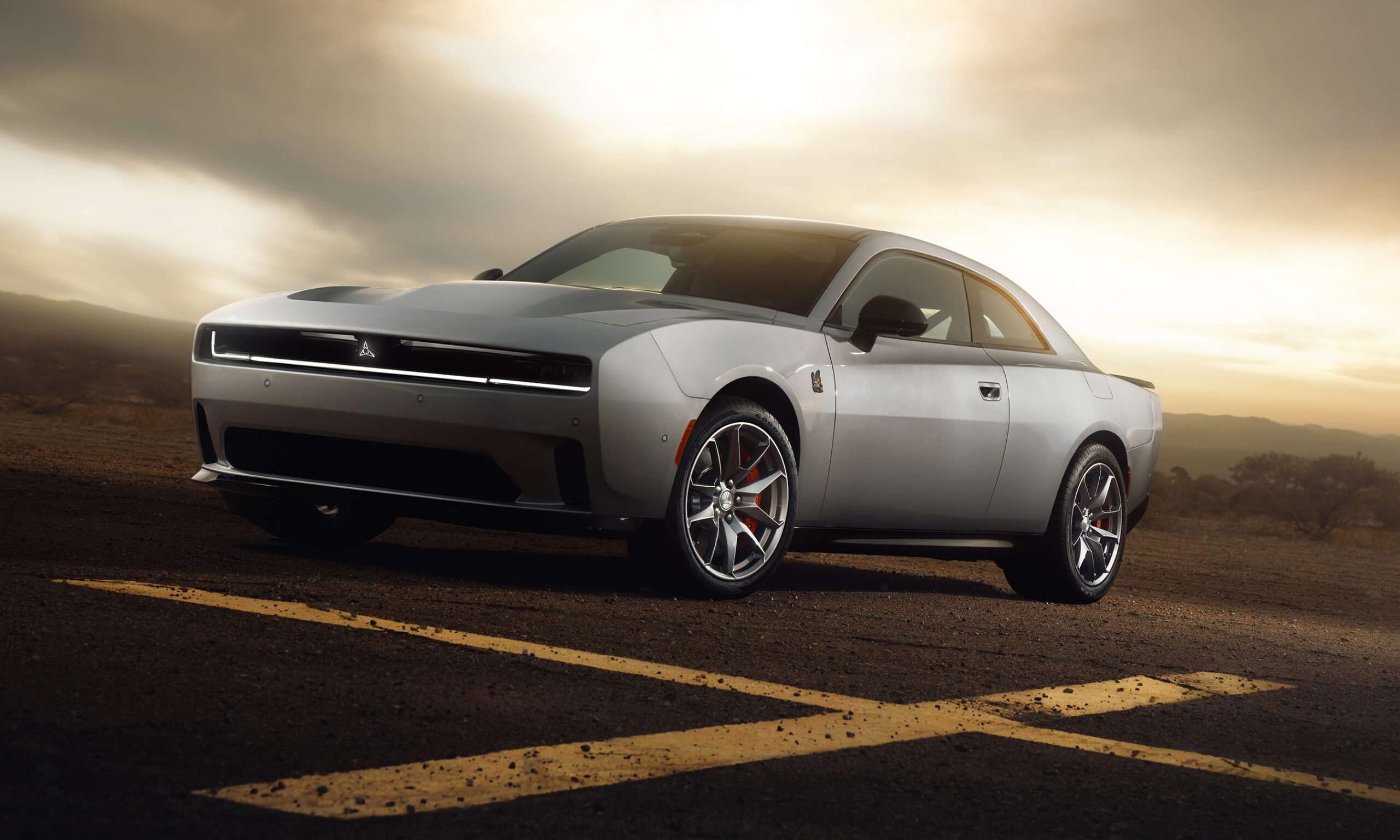
The revamped Dodge Charger muscle car goes electric for 2024 with the Charger EV – the Charger Daytona R/T and Scat Pack EVs, to to be precise. A pair of supercharged, gasoline-burning versions will follow in 2025.
The Daytona name will be reserved for electric models.
Unlike other EV makers, though, Dodge won’t be selling the Charger EV on range, or on its quiet electric power. It is still a muscle car, the company insists, and muscle car owners want to be heard and care more how fast they can go than how far.
For its eight generation, the Charger is all new and will come in both two-door and four-door body styles and two powertrain trims. The two-door will be available at launch, the four-door in early 2025. Both will have hatch-back style liftgates but will retain a couple-like silhouette.
Plenty of Ponies
The 2024 Daytona R/T is the base model, with a dual-motor all-wheel drive system that makes 404 pound-feet of torque and 456 horsepower – boostable to 496 horses for a few seconds with the “Powershot” mode switched on.
Next up is the 2024 Daytona Scat Pack, also with two-motor all-wheel drive but with 627 lb.-ft. and 630 hp – boostable to 670 ponies.
Dodge said the ’24 R/T can jet from zero to 60 mph in 4.7 seconds, the ScatPack in 3.3 seconds.
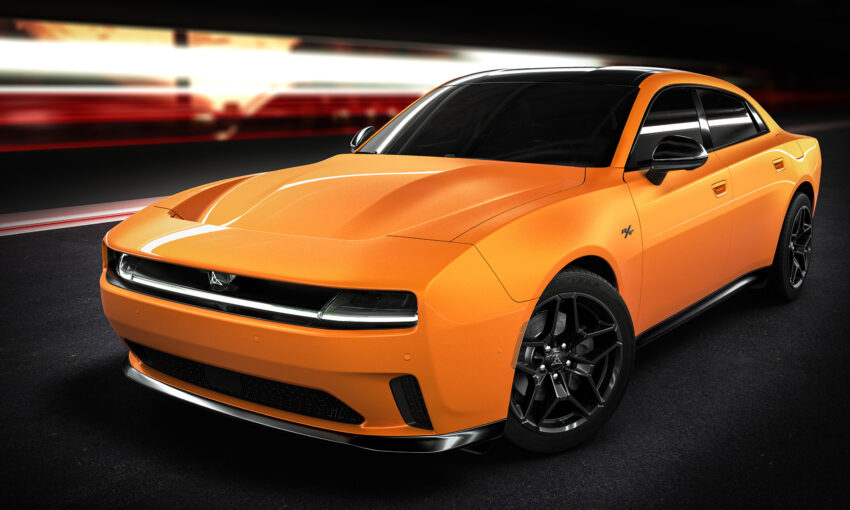
A “Direction Connection Stage” pack is standard for the 2024 charger EVs but will be an option in subsequent years, the comany s aid, Without it, the R/T will make 416 horsepower and the Scat Pack will driop to 550 hp.
An electronic noise maker fancifully named “Fratzonic Chambered Exhaust” is standard and is supposed to provide real-time feedback through noise and vibration, mimicking the sound and fury of the outgoing 700+ horsepower, V8-powered Hellcat models. It can be turned off for those who prefer an EV’s intrinsic quiet power.
There also are numerous race and track options including “drift” and “donut” modes – for track use only, of course.
The Scat Pack trim also has “track” and “drag” modes as part of its standard suite of drive modes.
Charging the Charger
Both Charger EV trims will use a 100.5 kilowatt-hour battery pack (93.9 kWh of usable energy) and a 400-volt electrical architecture capable of DC fast-charging at up to 110 kW, or a 20%-to-80% recharge in about 30 minutes. Dodge said there’s an onboard 11 kW charger for Level 2, 240-volt charging at home, sufficient to take an empty battery to 100% in about 9.5 hours.
The R/T is expected to win a 317-mile range rating from the EPA, the automaker said, while the Scat Pack should be rated at 260 miles on a fully charged battery.
An SRT Banshee high-performance model with 800-volt architecture for faster battery charging could come as early as next year, Also in 2025, a twin-turbo, straight-six powered Charger Sixpack internal combustion version with both standard – 420 hp – and high output -550-hp – powertrains.
Outside and In
The pre-production models shown by Dodge this week hew pretty much to the design of the SRT concept shown in 2022, meaning they’ll also look a lot like the outgoing 2023 Charger, but with sleeker lines..
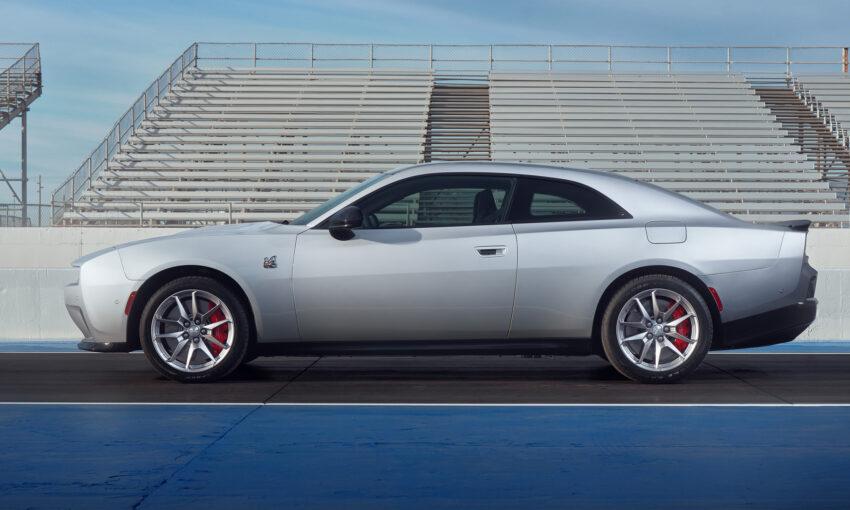
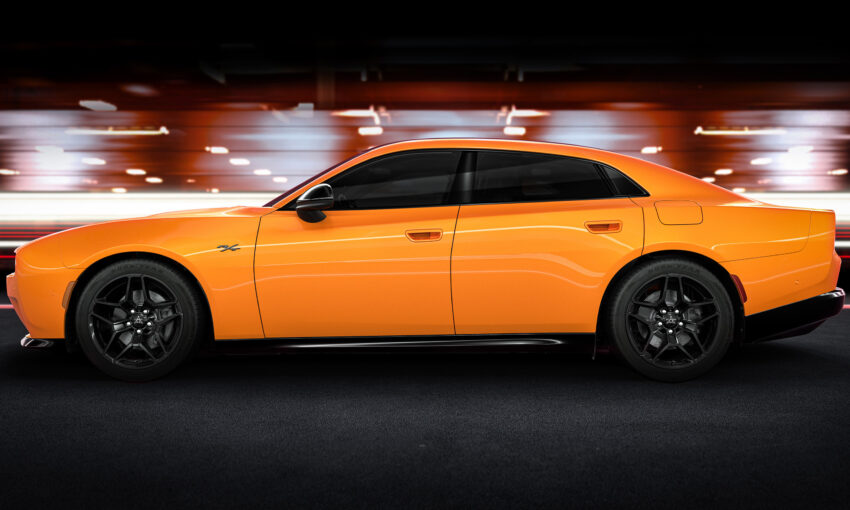
Inside, the 2024 Charger EV ‘s dash houses a pair of digital screens – a 12.3-inch infotainment touchscreen and a 10.3-inch gauge cluster and driver info display – a 16-inches cluster is optional. There’s a squared-off steering wheel and the center console is home to a pistol-grip shifter, te start button and a wireless phone charger pad.
